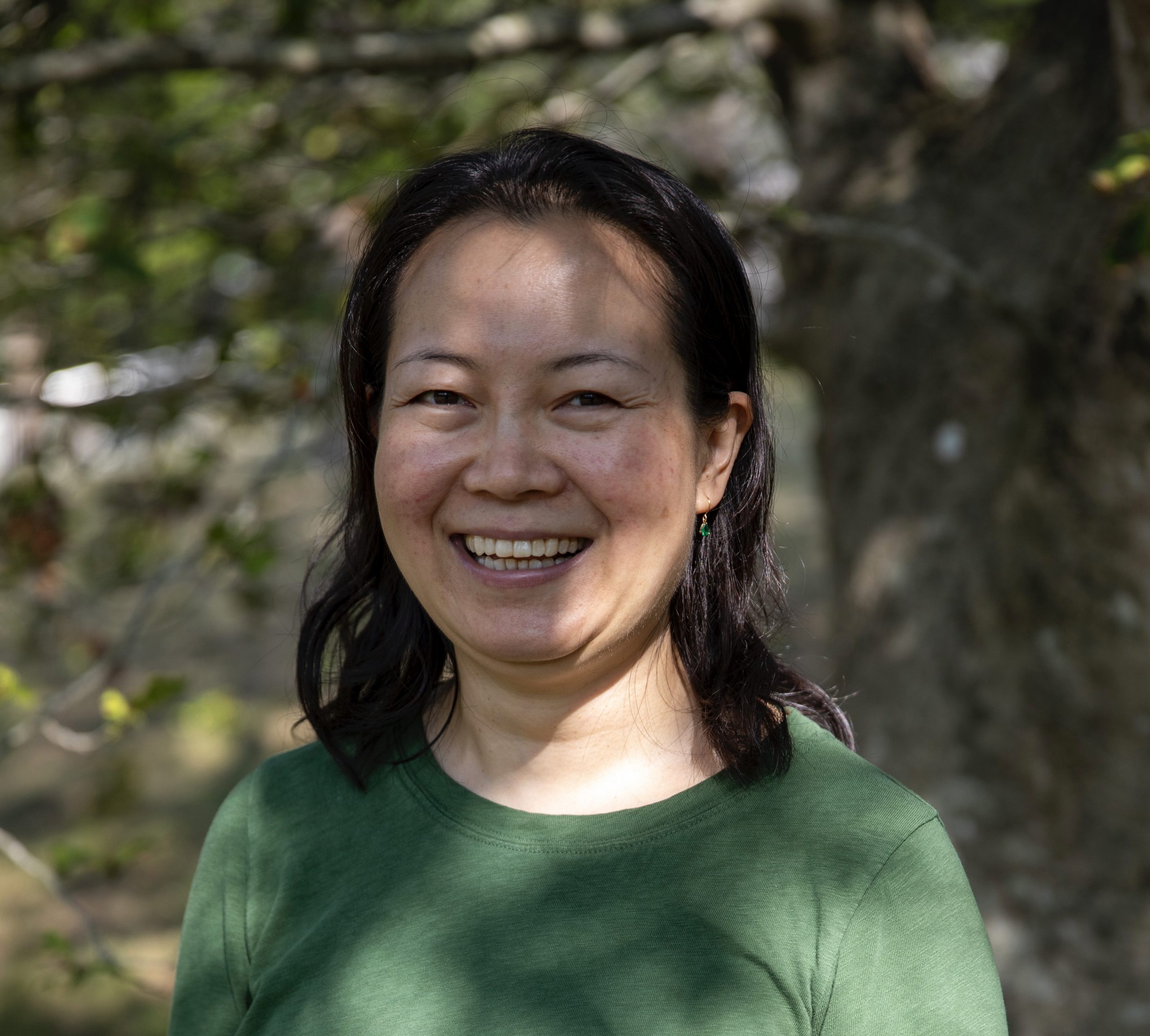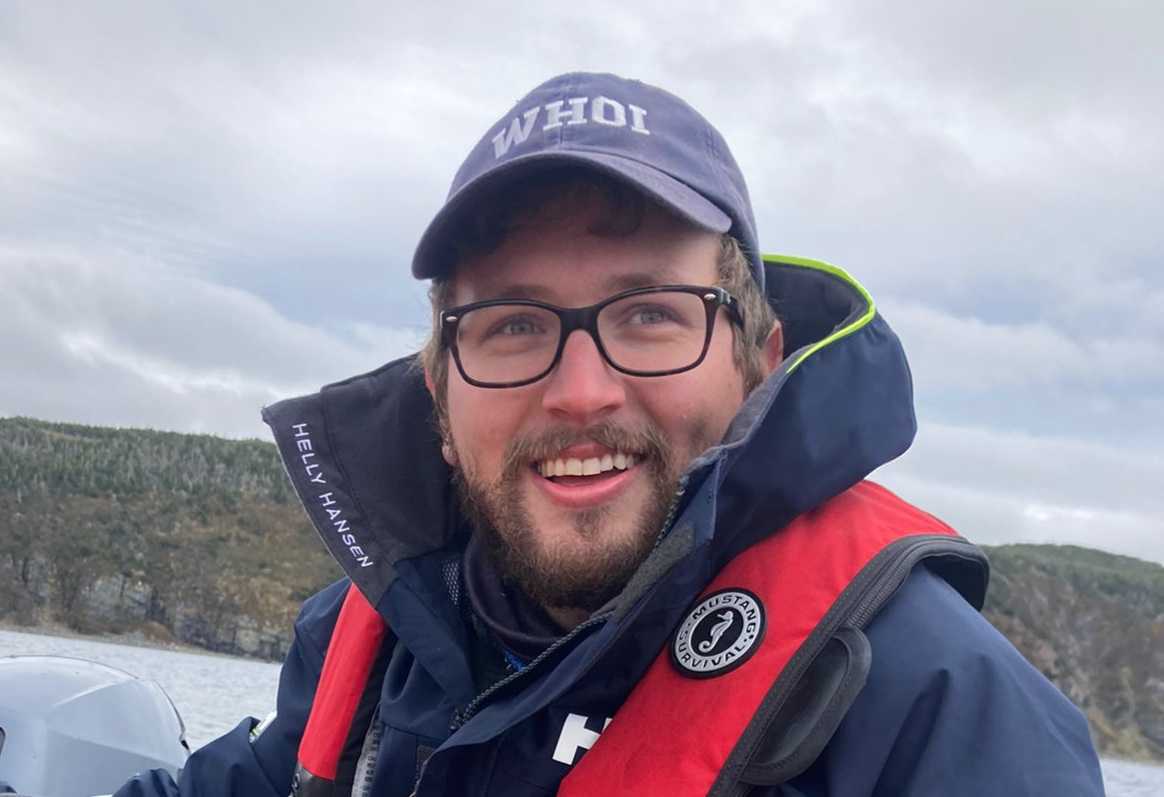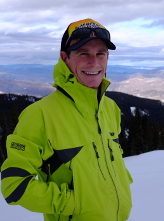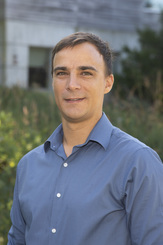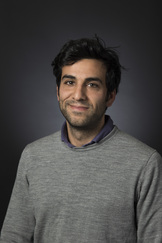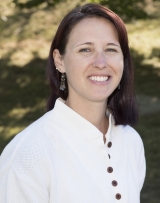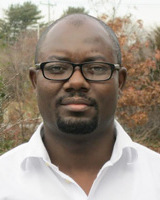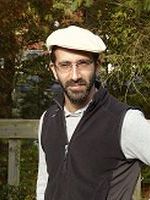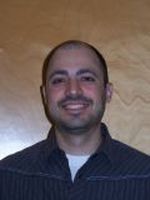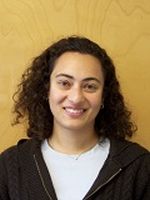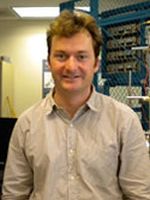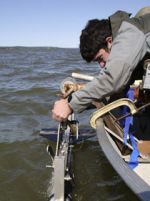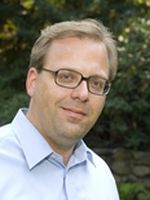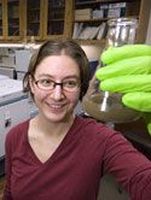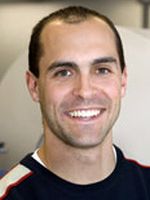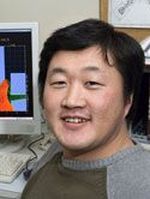Post-Doctoral Research
NOSAMS offers Postdoctoral positions through Woods Hole Oceanographic Institution's Academic Programs Office. Learn more on our Opportunities page.
Current Post-Docs
Tracking mixoplanktonic grazing and carbon flow using natural abundance radiocarbon as source tracer
2024-present
Dr. Sophia (So Hyun) Ahn completed her Ph.D. at Horn Point laboratory, University of Maryland Center for Environmental Science. Her scientific interests lie in mixoplankton— protistan plankton capable of both photoautotrophy and phagotrophy—playing dual roles as primary producers and consumers. As a postdoctoral scholar advised by Susan Q. Lang (NOSAMS) and Matthew D. Johnson (Biology), Sophia uses radiocarbon and stable isotopes to trace the contributions of autotrophy (photosynthesis) and heterotrophy (phagocytosis) during mixoplanktonic growth. Additionally, Sophia investigates carbon flow from bacteria, mixoplankton to higher trophic levels (e.g., copepods) using natural abundance radiocarbon signatures and mixing models. This approach provides more sensitive data than existing methods to quantify the ecological roles of mixoplankton.
MECHANISMS AND PATHWAYS OF MARINE DISSOLVED ORGANIC MATTER PRODUCTION AND TRANSFORMATION
2023-present
Dr. Kun Ma received her Ph.D. from the Skidaway Institute of Oceanography, Department of Marine Sciences, University of Georgia. As a WHOI postdoctoral investigator, Kun uses radiocarbon and stable carbon isotopes to trace the origin, transformation, and fate of marine dissolved organic carbon (DOC) and to constrain the fluxes of the transformation processes. Her research focuses on 1) improving sample preparation method for 14C analysis of DOC; 2) constraining the flux of pre-aged methane-derived DOC from methane hydrate-bearing cold seeps, through bulk DOC and compound specific isotope analyses on organic molecules such as organic acids, important intermediates of microbial metabolisms and early diagenesis of organic matter.
Past Post-Docs
RECONSTRUCTING HIGH MID-LATITUDE ATLANTIC HURRICANES DURING THE LATE HOLOCENE
2021-2023
Dr. Tyler Winkler received his Ph.D. from the Department of Oceanography at Texas A&M University. His research utilizes sediment records to reconstruct long-term variability in climate and the coastal ocean environment. As a Postdoctoral Scholar, Tyler works with Drs. Mark Kurz (NOSAMS) and Jeff Donnelly (G&G) to develop high resolution records of intense storm activity and coastal flooding in Atlantic Canada. Certain coastal ponds and fjords can document evidence of intense storm activity in the sedimentary record that can be used to reconstruct variability in the frequency of past storm activity. Radiocarbon analysis of organic material preserved in these cores will be used to temporally constrain storm deposits. These reconstructions will elucidate broad-scale spatiotemporal trends in the frequency of intense storms in the high mid-latitudes of the North Atlantic, with the aim of assessing how climate variability and sea-level rise can influence storm activity and associated coastal flood impacts. This research is therefore vital for anticipating the risks future storms may impose on coastal populations and infrastructure.
Constraining glacial lake flood events during deglaciation using lake sediments from NW New York
2019-2021
Dr. Simon Pendleton joins us after receiving his Ph.D. from the Department of Geological Sciences at the University of Colorado Boulder. His interests revolve around reconstructing paleoclimate from naturally occurring archives and constraining glacial-geomorphic processes. As a Postdoc Scholar working with Drs. Mark Kurz (NOSAMS), Alan Condron (G&G), and Jeff Donnelly (G&G), Simon is investigating glacial lake flood events in northwest New York State. Sediment cores from modern lakes should preserve the timing of lake lowering and associated flood events. Radiocarbon analysis of organic material from these lake sediments will provide temporal constraints on these flood events. These new spatial and temporal constraints on these glacial-lake flood events, in conjunction with ocean and climate model simulations will provide new insight into the impact freshwater inputs can have on global climate.
Linking organic matter quality and preservation in coastal sediments
2019-2020
Dr. Ulrich Hanke received his Ph.D. from University of Zurich, Switzerland. He is interested in studying the global carbon cycle with a keen interest in Anthropocene-influenced disturbances in various forms of organic carbon at the interface of aquatic and terrestrial ecosystems. As a postdoctoral investigator, advised by Mark Kurz (NOSAMS) and Chris Reddy (MC&G), he investigated changes in the organic matter composition in coastal sediments using temperature-ramped pyrolysis/oxidation (RPO). This technique resolves the complexity of organic matter by its thermal susceptibility and facilitates the isolation of discreet fractions for carbon isotope analyses. As the robust interpretation of radiocarbon data relies on a detailed quality control, Dr. Hanke continues to strive for improved standardization of analytical procedures to effectively constrain uncertainties from typical sample pretreatment prior to the AMS measurement.
Differential preservation of coccolith and foraminiferal carbonate in marine sediment
2017-2019
Dr. Adam Subhas received his Ph.D. from the California Institute of Technology Division of Geological and Planetary Sciences. His interests are in the marine calcium carbonate cycle, and its role in carbon sequestration. At WHOI, he is advised by Matt Long (MC&G), Dan McCorkle (MC&G), and Ann McNichol (NOSAMS). His research focuses on measuring the rates of calcium carbonate dissolution and precipitation in the laboratory and in the field, using a variety of approaches. With NOSAMS, Adam is using the radiocarbon ages of coccoliths and foraminifera to trace their differential preservation in deep sea sediments. The ages of coccoliths and foraminifera are offset, implying that their residence times in sediments are significantly different. While foraminifera are a popular paleoceanographic archive, their sensitivity to dissolution means that coccoliths could be more important for longer-term global calcium carbonate burial in the open ocean.
Investigating Organic Carbon Dynamics in Active Margin Sediments
2016-2017
Dr. Laurel Childress received her Ph.D. from the Department of Earth & Planetary Sciences at Northwestern University. As a WHOI postdoctoral scholar advised by Valier Galy (MC&G) and Ann McNichol (NOSAMS), Laurel used serial thermal oxidation to study organic carbon dynamics in active margin sediments. Her research focused on the preservation of organic carbon in turbidite sequences and reactions at the subsurface oxidation front, which are link to a loss of organic carbon preservation within turbidite sequences.
Coupling semi-continuous radiocarbon distribution and advanced molecular characterization to constrain the oceanic DOC cycle
2014-2017
Dr. Prosper Zigah received his Ph.D. from the University of Minnesota, Minneapolis. As a postdoctoral scholar working with Dr. Ann McNichol (NOSAMS) and Dr. Daniel Repeta (MC&G), Prosper used semi-continuous radiocarbon distribution and advanced spectrometric methods to understand the range and distribution of radiocarbon within major components of marine dissolved organic carbon (DOC) and to link these to specific molecular properties in order to accurately measure the carbon flux through DOC and how DOC cycles. Prosper also worked on novel approaches to isolate and purify distinct macromolecules from the deep ocean DOC for isotopic and molecular characterization. Together, these efforts provide new insights into the cycling of molecules within the DOC, and help constrain the cycling of the largest reservoir of reduced carbon in the ocean.
Reconstructing reservoir age for a better understanding of carbon cycling
2013-2015
Dr. Guillaume Soulet received his Ph.D. at the University of Aix-Marseille III, France. As a WHOI postdoctoral scholar advised by Valier Galy (MC&G), Ann McNichol (NOSAMS), and Liviu Giosan (G&G), Guillaume developed various methodologies to calculate and reconstruct 14C reservoir age offset. He used the developed methodologies and reservoir age as a proxy to better understand carbon cycling and hydrologic changes of the Black Sea during the Holocene. He developed a novel method to measure the atmospheric 14C of aquatic sediments devoid of terrestrial macrofossil: the 14C isochron method.
Constraining Sources & Fates of Organic Molecules in the Oceans
2010-2013
Dr. Steven R. Beaupre received his Ph.D. from the department of Earth System Science at the University of California, Irvine. As a WHOI postdoctoral investigator, Steve used radiocarbon to constrain age spectra in complex natural matrices of marine dissolved and particulate organic carbon. He focused on 1) improving methods to separate populations of carbon-containing molecules based on thermal stability, 2) developing an interface between sample extraction methods and NOSAMS microwave plasma gas ion source, and 3) modeling the global distribution of radiocarbon in the marine organic and inorganic carbon reservoirs. These efforts in obtaining novel observations and interpretations are fundamental to constraining the origin, persistence, and fate of organic molecules in the sea, and hence their significance within the global carbon cycle.
Radiocarbon Analysis of Ultra-Small Samples and Polar Biomarkers
2010-2014
Dr. Sunita Shah did her Ph.D. work at Harvard University. As a postdoctoral scholar advised by Ann McNichol (NOSAMS) and Ben Van Mooy (MC&G), Suni developed methods to make compound-specific radiocarbon measurements of intact polar lipids to quantify the effect that sedimentary archaeal communities have on TEX86-based paleo-sea surface temperature reconstructions. To accomodate the small sample sizes, she also explored the use of an elemental analyzer to combust lipid samples with the goal of reducing the process blank associated with closed-tube combustion and tested reduced-volume graphitization reactors which allow the measurement of samples containing <5 micrograms of carbon.
Development of Interfaces for CFAMS
2008-2010
Dr. Cameron McIntyre received his Ph.D. from Macquarie University, Sydney, Australia. As a postdoctoral investigator, he designed and constructed a novel gas chromatograph-combustion system for the continuous-flow 14C- Accelerator Mass Spectrometry system (CFAMS). The complete GC-AMS system has been successfully operated and the first continuous-flow compound specific radiocarbon measurements recorded. This technological breakthrough allows the rapid analysis of compounds for radiocarbon. It also paved the way for other analytical instruments to be coupled to the continuous-flow AMS system. Cameron's interests include instrument and method development and their application to geochemical research.
Radiocarbon Dating Holocene Sea Levels
2008-2012
Dr. Andrea Hawkes did her Ph.D. work at the University of Pennsylvania. As a postdoctoral scholar advised by Associate Scientist Jeff Donnelly and USGS scientist Jeff Williams, Andrea dated basal peat samples from Bermuda in order to produce a high quality Bermuda sea-level record that will be used to better understand North American deglacial history. She is also devolping a high resolution hurricane record for the Atlantic coast. The laminated sediments may allow for seasonal/yearly-hurricane resolution. Hawkes and colleagues want to look back over the past 10,000 years in the geologic record to get a detailed understanding of the full range of possible hurricane scenarios. This record spans times when the climate was different than today. It offers potentially important clues to how climate affects the intensity and frequency of hurricanes and what that may mean for hurricane forecasts as Earth’s climate changes in the future.
Continental Erosion: Radiocarbon Dating of Individual Organic Molecules from River Sediments
2007-2010
Dr. Valier Galy, received his Ph.D. at CRPG-CNRS, Institut National Polytechnique de Lorraine. As a postdoctoral scholar advised by Tim Eglinton and Bernhard Peucker-Ehrenbrink, Valier worked on coupling radiocarbon measurements of bulk organic matter and molecular biomarkers with inorganic isotope tracers to study the source, transport and fate of organic carbon in the Ganges-Brahmaputra river basin. He developed a record of the spacial and temporal variability of the sediment load in this complex river system as well as characterizing petrogenic and organic carbon phases in these sediments. Radiocarbon dates indicate that 30 to 50% of the carbon initially present in the Himalayan rocks is conserved during the erosion cycle. He moved on to join the scientific staff at WHOI.
Continuous Flow AMS
2007-2009
Dr. Ernst Galutschek received his Ph.D. from the University of Technology Vienna, Vienna, Austria. He worked as a Postdoctoral Investigator with Dr. Mark Roberts on the construction and initial characterization of the second-generation gas ion source. The gas ion source, in conjunction with an AMS system, allows for the monitoring of 14C in a continuous flowing CO2 gas stream. Ernst worked to further develop a key component of the new system, the gas-accepting microwave-plasma ion source first built at Atomic Energy of Canada Limited, Chalk River, Ontario, Canada.
Transport of Terrestrial Organic Carbon
2005-2007
Dr. Angela Dickens, a Postdoctoral Scholar who received her Ph.D. from the Department of Chemistry, University of Washington, Seattle, Washington, is working to understand how different forms of organic carbon (OC) move through and are transformed within the environment. Her postdoctoral research focused on using radiocarbon measurements to constrain the timescales over which terrestrial vascular plant-derived OC is transported via river systems to the oceans. These terrestrial “residence times” are likely to vary depending on the properties of the watershed (e.g. size, relief, and climate) and, in particular, on the importance of storage of OC within the watershed (e.g. in soils or floodplains). An understanding of these residence times is fundamental to our comprehension of the dynamics of carbon cycling, however, our current understanding of these timescales remains extremely limited.
New Applications for Continuous-Flow AMS
2005-2007
Dr. Brad Rosenheim, a Postdoctoral Investigator who received his Ph.D. from the Rosenstiel School of Marine and Atmospheric Science, University of Miami, Miami, Florida, helped with the development of the Continuous-flow Accelerator Mass Spectrometer for Carbon-14 measurement with Dr. Mark Roberts. This instrument, the first of its kind, will accept coupling to various peripheral instruments including GC, LC, automated carbonate preparation, and laser ablation. His specific interest is in adapting the system for rapid analysis of carbonates to scan for the radiocarbon bomb curve and provide a first order age model. This type of advance will enable easy and rapid assessment of the age models of deep sea corals, zooxanthellate corals, sclerosponges and mollusks.
Development of a Gas-Ion Source
2004-2006
Dr. Baoxi Han, a Postdoctoral Investigator who received his Ph.D. from the Institute of Heavy Ion Physics, Peking University, Beijing, China, worked with Dr. Mark Roberts on the development of the Continuous-flow Accelerator Mass Spectrometry (CFAMS) system. Specifically, his efforts focused on ion optical modeling and design of the CFAMS beam line. In addition, Baoxi worked on development of the data acquisition system and was involved in the research and development of the microwave ion source for the CFAMS system.
Other Postdoctoral Staff
Dr. Pascale Poussart, Postdoc Scholar - 9/2004 - 3/2006 from Harvard worked with Konrad Hughen and Timothy Eglinton radiocarbon dating terrestrial biomarkers in laminated ocean sediments.
Dr. Albert Benthien, Postdoc Investigator - 1/2003 - 1/2005, from University of Bremen, worked with Bob Schneider constructing the first interface to the prototype gas ion source, a programmed-temperature combustion system.
Dr. Gesine Mollenhauer, Postdoc Scholar - 11/2002 - 5/2004, from University of Bremen, worked with Tim Eglinton and John Hayes on "molecular sedimentology."
Dr. Sang-Wook Kim, Postdoc Investigator - 11/1999 - 6/2002, a plasma engineer trained at the University of Chicago and the University of Michigan, worked with Bob Schneider developing the microwave plasma ion source for continuous flow AMS.


